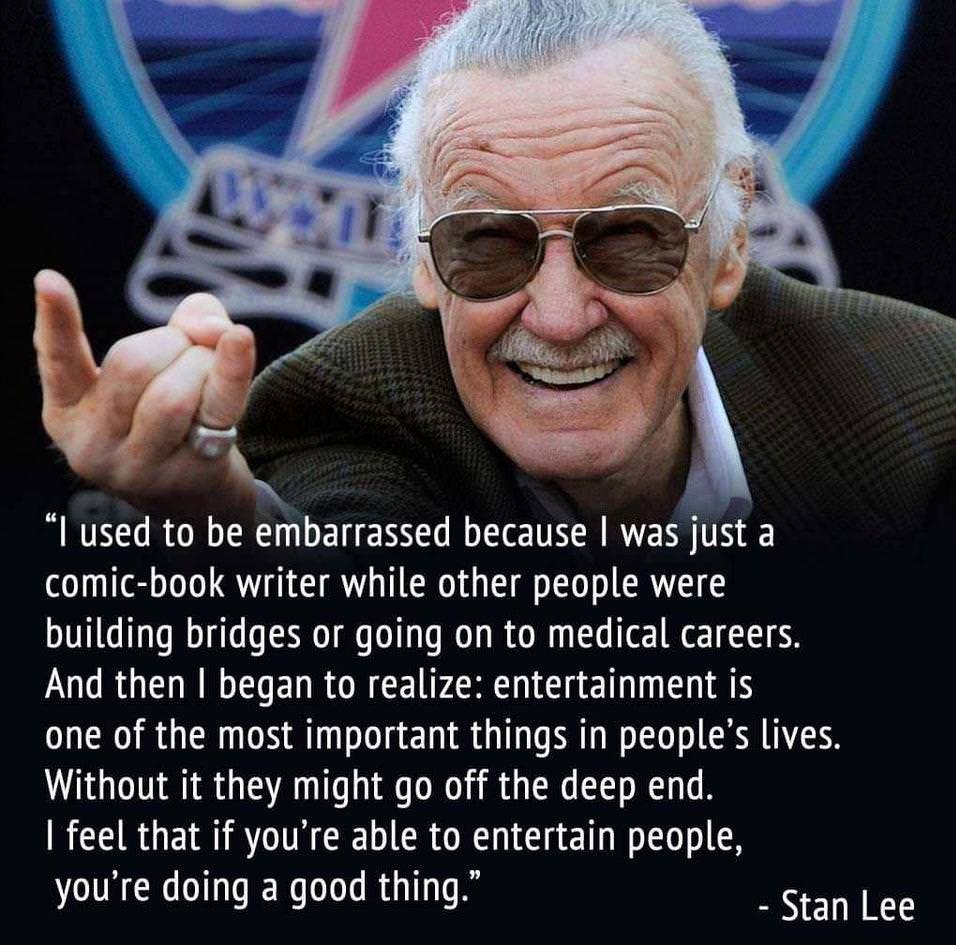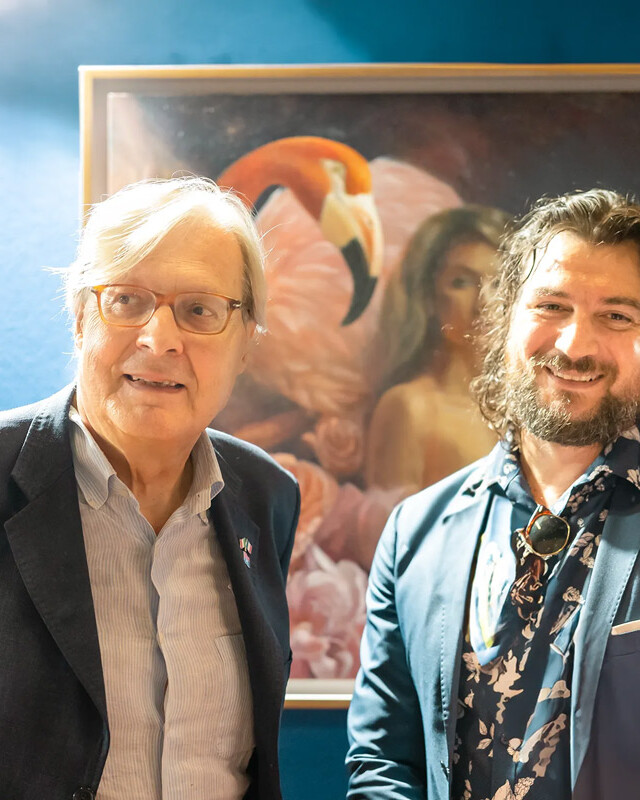Is painting a form of entertainment?
Art, a human activity that seemingly ‘finds no space’ in everyday rationality, actually plays a primary role in the development of society.
If you are confused by this statement, I absolutely need to provide you with some additional information.
The reason? Art possesses a uniquely compelling attraction. Music, theater, video games… how many forms of entertainment have we invented?
According to the latest consumer expenditure data published by the United States Department of Labor, the average cost for entertainment reached $3,458 per household in 2022.
In 2022, consumer spending on home entertainment in the United States amounted to 36 billion dollars.
And once more, in the words of Stan Lee, Marvel’s creator: “entertainment is one of the most important things in people’s lives. Without it, they might go off the deep end.

Can an art exhibition be considered entertainment?
Why shouldn’t it be? An art exhibition is a form of entertainment where people go to intellectually elevate themselves, to cultivate their minds.
The seven main categories of the fine arts include Architecture, Music, Painting, Sculpture, Poetry, Dance, and Acting (which encompasses both cinema and theater). Although these are classified as distinct subdivisions, in reality, they all fall under the unifying and broad designation of “Fine Art”.
It is evident, therefore, that these forms of art share similarities while each maintaining distinctive characteristics. One attends the theater for the pleasure of live performance, while one goes to the cinema to immerse in a visually engaging and captivating narrative.
Why does one go to an art exhibition? What does one do there?
Renato Mannheimer, an Italian sociologist and professor at the University of Milan-Bicocca, argues that people approach art either for enjoyment or out of a sense of duty. Visual art, transcending mere aesthetic pleasure, should lead viewers on both an emotional and intellectual journey.
Philippe Daverio, a well-known art critic, believes that art exhibitions should be visited multiple times because visual art requires exploration and understanding through repeated viewings.
In a recent discussion with an art gallery owner, a distinction emerged between commercial and institutional artists, with the former focusing on selling their works and the latter on the institutional aspects of art.
However, this distinction seems to overlook a fundamental reality: all artists need to sell their works to make a living. They have families and daily expenses to support.
In other words, every artist, whether they realize it or not, plays both commercial and institutional roles.
However, the viewpoint of the gallery owner implies that an artist’s role extends beyond just the practical aspects of their work.
Being an artist is a calling, a commitment to goals that surpass the value of money. Indeed, art, in its various forms, presents stories and concepts that stimulate both the mind and heart.
Entertaining is a privilege that only a few artists manage to achieve. This, indeed, is a significant responsibility to carry forward.
Can art predict the future?
Artists, due to their heightened sensitivity, often have a keen sense of current events. Some artists have shown the ability to anticipate the future.
An example is Mark Wallinger’s work, ‘Threshold to the Kingdom’ (2000), showcased at the Venice Biennale in 2001, which dramatically preceded the events of September 11th.
The artwork depicts an airport, where the door opens and people move in slow motion, creating a dramatic and surreal atmosphere.
The Civic and Human Duty of the Artist
Artists, known for their deep sensitivity, have a responsibility to use their talents for social good. This can help improve and energize the society we live in, which often has more observers than active contributors.
 John F. Kennedy, in his speech honoring Robert Frost, emphasized the crucial role of the artist in society. Although he was referring to the role of the poet, in reality, we can extend this concept to all forms of art.
John F. Kennedy, in his speech honoring Robert Frost, emphasized the crucial role of the artist in society. Although he was referring to the role of the poet, in reality, we can extend this concept to all forms of art.
According to JFK, artists are guardians of truth and justice, using their art to challenge and question power and authority.
I discuss this in more detail in this article: why artistic education is important.
What are the issues that artists should reflect upon?
Which justice should be sought? It’s hard to say, because this is an ethical question that each of us must individually address. My personal experience has confronted me with a problem.
In helping Anastasia, a 12-year-old girl, to grow up in this world, I often consider the specific challenges that she faces every day. These include the role of social media in shaping her character and viewpoints, and how this might distort her common sense or behavior.

Indeed, access to the internet for someone not mentally prepared instantly connects to three major issues: violence in the form of bullying and other forms, child abuse, and human trafficking.
It may seem like I’m exaggerating, but unfortunately, that’s not the case.
The daily harm done to kids is showing them an adult world where ideas not meant for a child’s mind are presented as entertainment.
Clothing styles that exaggerate and highlight body shapes are obviously promoted by Instagram and TikTok, and since they create engagement, they are further pushed by their respective algorithms.

The complete and brutal ‘truth’ about sex is just a click or a search away on all phones. This is obviously the most brutal field that can exist in terms of sexual education.
Misinformation leads to the perpetuation of violence, which these young people then seek out in their romantic lives.
Social media are also a conduit for child grooming, and if one thinks this is a distant issue, talking to a surviving victim quickly reveals that it’s not quite so.
Child abuse doesn’t only occur through social media. Indeed, there are institutions that, in contexts where the law still has gray areas, take advantage of this and use minors for substantial profit.
If this topic seems tough and challenging to address, I agree with you. However, one must become aware of it in order to address and solve it.
Violence against women, child abuse, and human trafficking.
There are three plagues that afflict humanity, seemingly for a long time.
Violence against women
Recently, in Italy, the issue of violence against women has continued to be a significant concern. In 2023, there have been numerous cases of femicide, with an alarming number of women killed.
A recent case that has raised concerns in Italy about violence against women is that of Giulia Cecchettin, a young woman whose body was discovered on November 18, 2023, by the Fire Brigade in the Barcis area of Pordenone province during a search to find her.

Child abuse.
Child abuse, a deeply rooted problem in many societies, can manifest in various forms, including exploitation through legal systems such as the Baker Act in Florida or the TSO in Italy. These tools, originally intended for protection, can sometimes be distorted for profit and control purposes.
Human trafficking
Concurrently, child trafficking remains a global scourge, often hidden but always present, requiring increased awareness and direct action to combat it.
What is human trafficking? It’s the abduction of humans, typically children but not exclusively, for malicious purposes such as sexual exploitation.
Statistics and research on child abuse and human trafficking reveal the urgency of these issues.
Sources such as UNICEF and the FBI provide data that not only illustrate the extent of these crimes but also emphasize the need for a stronger and coordinated global response, highlighting the necessity for effective policies and actions.
Art as a Social Tool
What can an artist do in the face of all this? Perhaps not much. But what can be done is to talk about it, raise awareness, not through shock or violence, as some news outlets do (most people know that violence is not cured with another form of violence).
An artist, even though it might seem like they can do little in the face of such serious realities, actually has enormous potential to influence and raise awareness in society.
Artists can use their art as a means to communicate, raise awareness, and educate. Through various forms of art—whether it’s painting, sculpture, music, theater, dance, cinema, or any other expressive form—artists can bring to light stories and experiences, creating an emotional connection that often goes beyond what can be conveyed through words alone.
In this context, I want to present what I have worked on, what I believe can be useful to address this issue, and help facilitate the dialogue.
The Radiance Collection
The Radiance Collection is an example of how art can be used to raise awareness and mobilize public opinion on critical issues such as child abuse and human trafficking.
These artworks, through visual and emotional expression, aim to transform the perception and attitude of the audience, fostering constructive dialogue and greater social awareness on topics that are truly important.





Romeo and Juliet Collection
The "Romeo and Juliet" Collection consists of a series of paintings that narrate the famous story in a different context: what would have happened if the two lovers hadn't killed themselves? This becomes a metaphor for what each of us faces in finding and maintaining a romantic relationship.
In this context, in my opinion, it represents an intriguing analysis of the relationship between man and woman and how such a relationship can be less superficial.
This article was last updated on November 30, 2023 by Alex Righetto
This article available in:
About the author
Alex Righetto
Alex Righetto is an Italian artist based in the US, known for his vibrant and bold paintings that reinterpret Italian and European history in a contemporary context. His work has been featured in various exhibitions and publications, including Vanity Fair and Vogue






